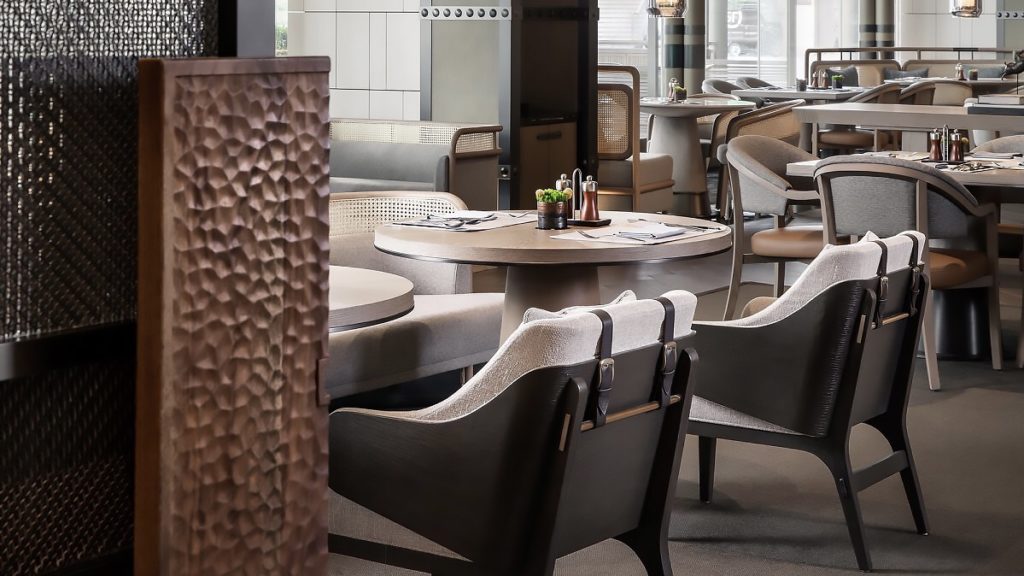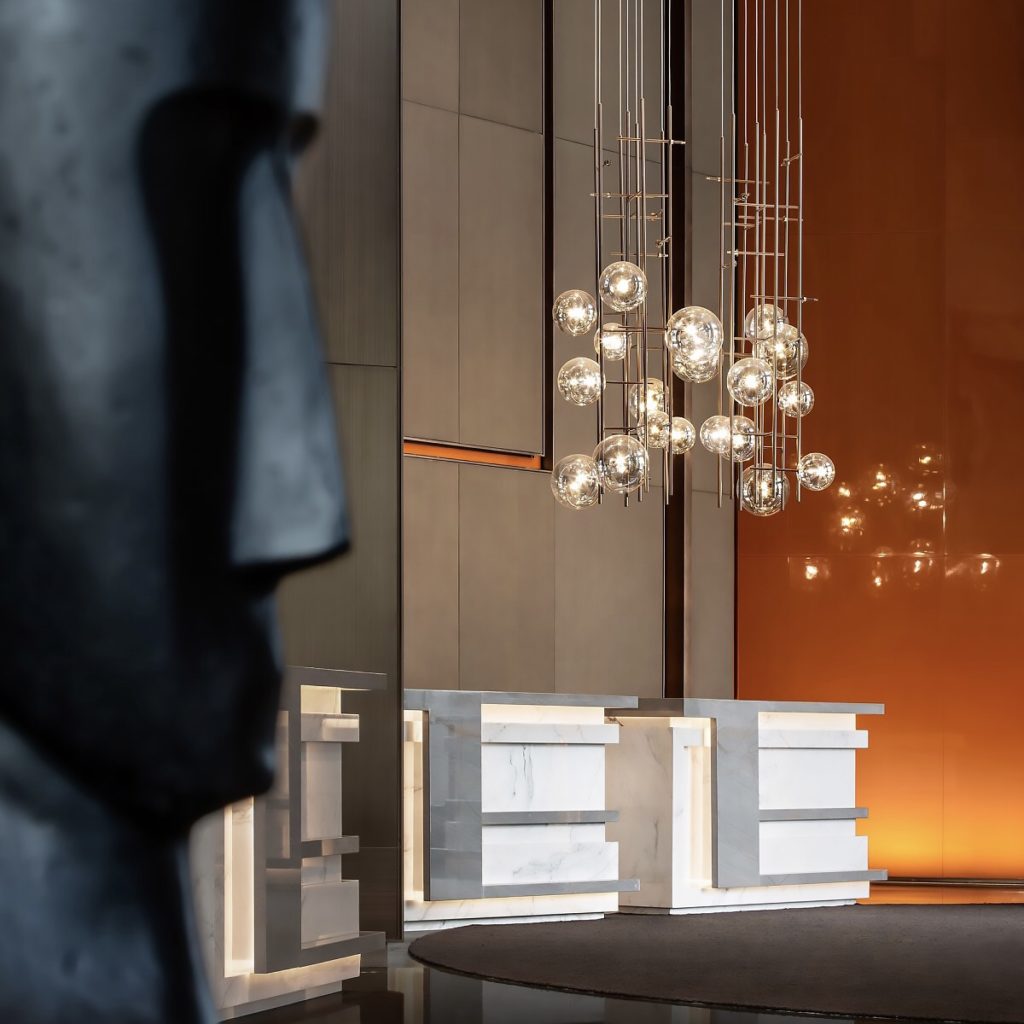Introduction
A hotel interior design furniture can make or break a visit. The interior designer should be able to create an environment that is inviting and cheerful, as well as functional for guests. The interior design of hotels can range from very modern to more traditional styles, depending on the client’s preferences and budget. There are many different factors that go into interior designing hotel furniture, such as understanding hospitality industry trends and customer needs in order to provide the best experience possible. This article will explore some tips for interior designers working on new projects in this area!

What should you consider when interior design hotel furniture
When it comes to interior design, furniture is one of the most important elements. Hotel furniture, in particular, has to be durable and stylish, as it will be seen by many guests. There are a few key considerations when choosing furniture for hotels:
-Functionality: Hotel furniture needs to be practical, as it will be used by many people. It should be comfortable and easy to use, as well as versatile enough to suit a range of different spaces.
-Style: Hotel furniture needs to be stylish and elegant, to create a luxurious feel. It should also be timeless so that it doesn’t date quickly.
-Durability: Hotel furniture needs to be durable, as will likely be used extensively. It should also be easy to clean, in order to maintain a sanitary environment.
-Price: Hotel furniture needs to be within the hotel’s budget – it should also be cost-effective so that there is value for money.
-Color palettes: Hotel interior design needs to work alongside interior design themes and styles already used in the rest of the interior. It should fit in with this, while still having its own sense of style.
As well as these considerations, hotel interior designers also need to take into account how the furniture will look once it has been put together – they need to imagine how it will all come together when they are putting their ideas onto paper. They should choose furniture which looks good when placed next to other items, and which can be easily accessorized.
When it comes to choosing hotel furniture, there is a range of factors to consider. However, by keeping the above considerations in mind, interior designers can create spaces that are both stylish and functional. Hotel guests will appreciate the luxurious feel of well-designed furniture and will be able to relax in comfort and style. Thanks to interior design hotel furniture, everyone wins!
When it comes to interior design, hotel furniture is a critical aspect of the overall look and feel of the space. Hotel guests will spend a significant amount of time in their rooms, so it’s important to choose furniture that is both comfortable and stylish.
There are many different types of hotel furniture to choose from, and it can be difficult to know which pieces are right for your space. Here are a few tips to help you get started:
– Consider the style of your hotel. If you want a sleek and modern look, minimalist furniture is a good choice. For a more traditional or antique vibe, opt for pieces with intricate details.
– Think about the purpose of each piece of furniture. Bed frames, headboards, and armoires should be strong and durable. Coffee tables, desk chairs, and chaise lounges should be comfortable for hours at a time.
– Look for hotel furniture in neutral colors such as black, gray, or white. If you want to add pops of color, choose accents such as pillows or throws in bold shades like red or turquoise.
– Keep convenience in mind when choosing interior design hotel furniture. Make sure there is enough storage space for guests’ belongings and that each piece can stand up to heavy use.
– Be mindful of the size and layout of your property when furnishing guest rooms. You may need to buy two-bed frames instead of one king if both are going into standard bedrooms measuring five feet by six feet.
– Choose hotel furniture that is safe for your guests and property by opting for pieces that meet strict flammability standards.
– When possible, choose interior design hotel furniture that can be easily cleaned with a vacuum or damp cloth to keep rooms looking their best.
The interior design of a hotel plays a critical role in the overall experience of visitors, so it’s important to select interior design hotel furniture that appeals to clients’ tastes and complements the rest of the space. With these tips, you’ll be able to furnish your interior design hotel smoothly.
When it comes to interior design, hotel furniture is a critical component. Furniture plays a major role in setting the tone for a room and can make or break the overall aesthetic. In addition, furniture needs to be functional and comfortable, so guests can relax and enjoy their stay.

The importance of Interior design hotel furniture
There are many different types of hotel furniture available, from traditional pieces like beds and tables to more modern options like lounge chairs and sectionals. It’s important to choose furniture that will both fit with the style of your hotel and meet the needs of your guests.
One of the most important pieces of hotel furniture is the bed. The bed is where guests will spend most of their time, so it’s important to select one that is comfortable and stylish. Consider choosing a bed that has storage space, as well as a small seating area for guests who want to relax in the evening.
Another essential piece of hotel furniture is the table. Guests need a place to eat their meals and work on their laptops, so make sure you have plenty of tables available throughout the property. In addition, consider placing a side table or coffee table next to couches or chairs in lounges and lobbies for additional seating options. These types of interior design hotel furniture will encourage guests to spend time relaxing in common areas where they can meet each other and socialize with other guests from around the world.
In addition to beds, tables, and seating options there are interior design hotel furniture pieces that may not be as obvious. For example, sideboards are a great option for hotel lobbies or break rooms. Sideboards can store extra flatware, dishes, and glasses to make mealtime easier for your staff members. They also provide additional interior design hotel furniture for guests who wish to set up their laptops at the lobby bar or coffee shop.
What are the 7 elements of interior design?
The seven well-known elements of interior design are:
1. color.
As mentioned above, the colors used in hotels play an important role in how people feel about spending time there.
Use psychology to choose colors for the hotel’s interior design.
Psychology plays an important role in choosing the right color for your hotel’s interior design. Cool colors such as blue and green promote relaxation and calmness and are suitable for bedrooms and bathrooms. Small yellow accents can stimulate conversations and can be used in business areas or conversation corners. Purple gives a sense of sophistication, luxury, and wealth, especially when paired with gray or metallic colors.
Saturation and shadows are also an important part of color psychology. Based on experience, light colors are considered airy, making the room feel brighter and more spacious. On the other hand, dark colors bring sophistication and intimacy. Therefore, a bright, open lobby might look great in light colors such as gold and cream, while a private space like a bar might be better in wine red, purple, and gray.
2. space.
This includes the overall size of the area being designed and the intersection between positive (furniture) and negative (empty) spaces.
Your guests choose to visit your location for a reason, be it business or leisure. By introducing some local characteristics, let them feel that they are part of the local community. This can be in the form of architectural elements, building materials, color schemes, era styles, or even ornaments that directly refer to the destination.
3. texture.
Texture adds depth and intrigue, and if used properly, can completely change the space. It is everywhere, from walls and curtains to chairs and pillows.
4. pattern.
Similar to textures, patterns can shape or destroy the overall atmosphere of a room.
5. String.
The lines tell people where to look and add a sense of direction to the space. They are divided into horizontal, vertical and dynamic, including everything from tables and chairs to windows and stairs.
6. Light.
Similar to color, light—whether natural or artificial—helps create an atmosphere and provides guests with a transition from morning to night.
As an often-overlooked element, hotel lighting has practical and aesthetic significance for guests and employees. Proper lighting will make guests feel relaxed, rejuvenated, and refreshed. The wrong lighting can increase stress, and guests don’t really know the cause. It is similar to the color psychology introduced above, and it plays a huge role in hotel interior design.
7. Form.
Perhaps the most common of all interior design elements, form refers to the overall shape of the space and the objects in it.
Conclusion
The interior design of hotel furniture is one of the most important factors for interior design. The interior design hotel furniture should be able to meet all your needs and requirements. There are many different styles, colors, shapes, and sizes of interior design hotel furniture that you can choose from to suit the style of your room.
